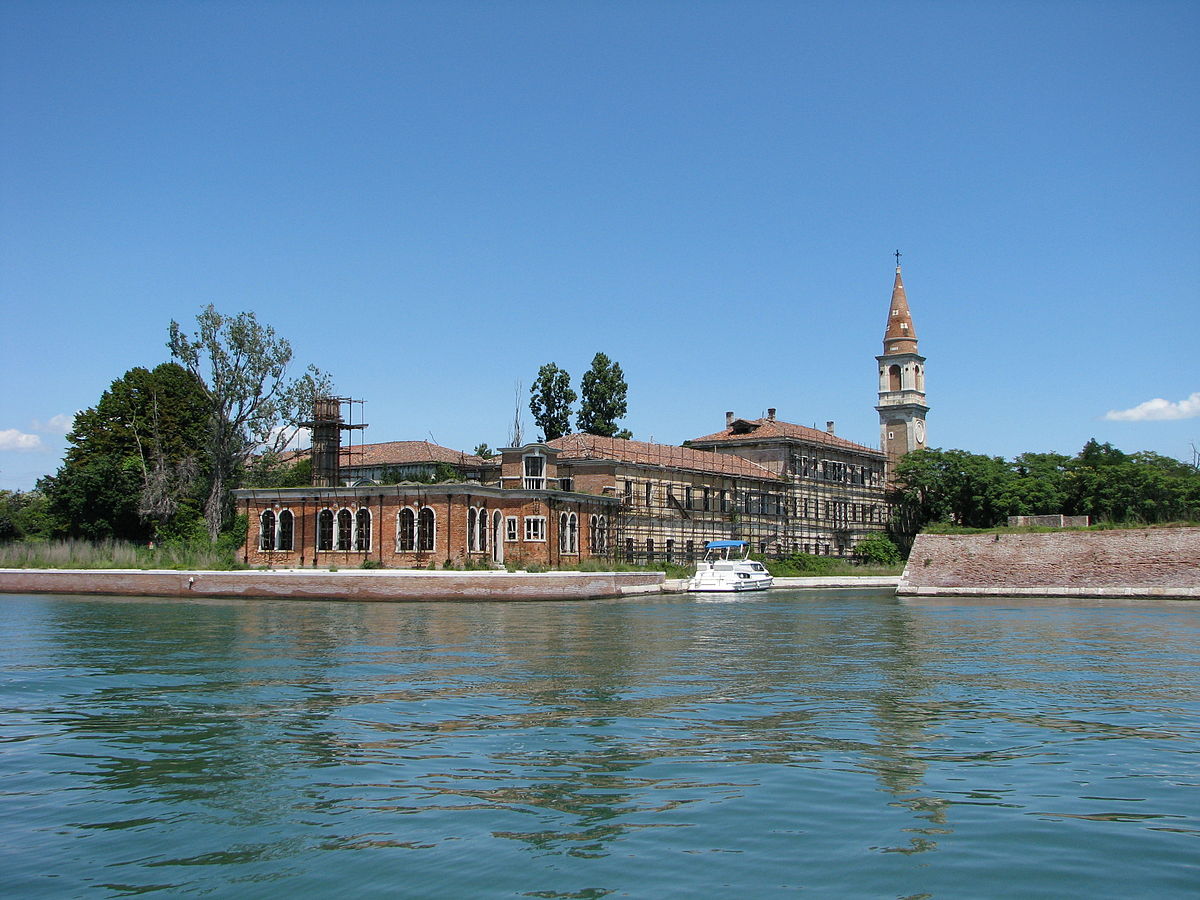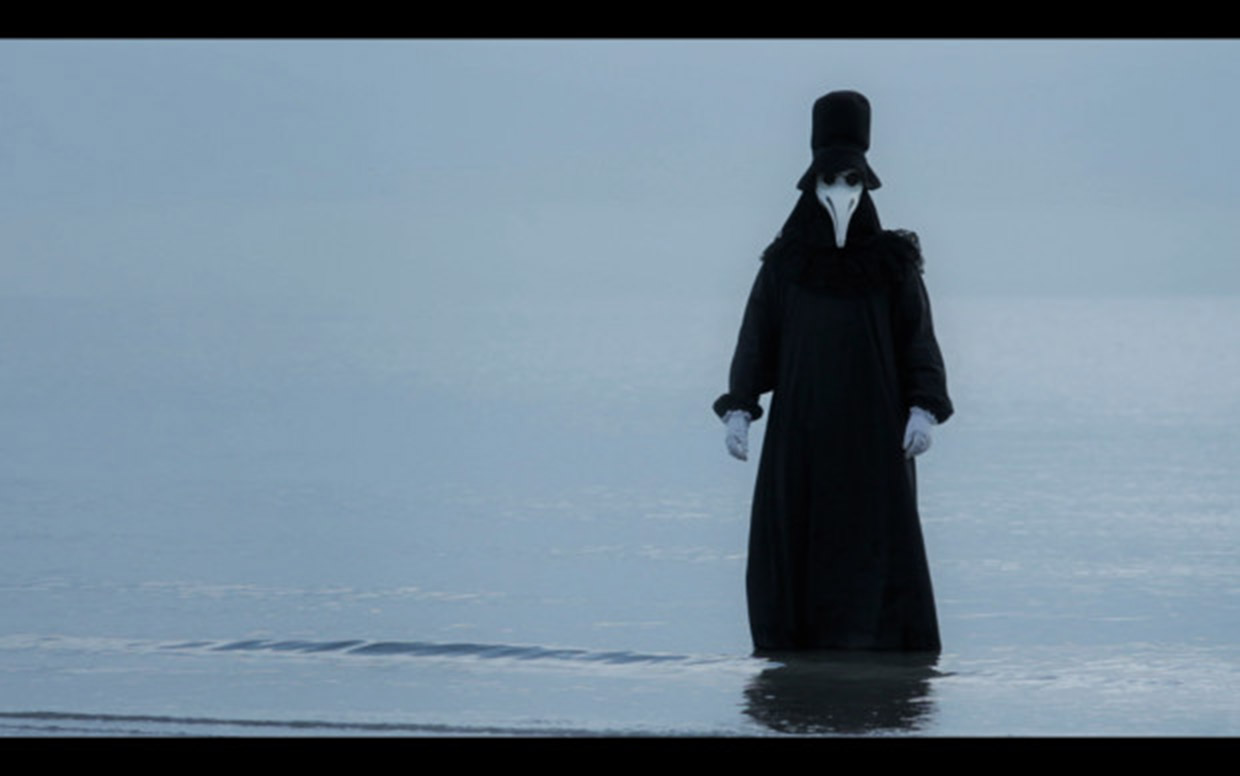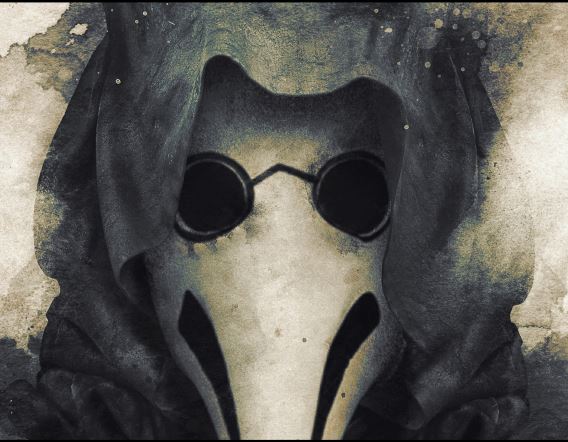Though we’ve not lost any of our academic appreciation for the hearthside story or campsite tall tale, it cannot be denied that we as a species have moved into the art of mass producing our spoken heritage. The film maker may not ever replace the greatest of our local tavern heralds, but like any story teller, the film maker has a duty to tell the stories that drive them.
For director Emanuele Mengotti, the story he is preparing to tell the world has driven him since childhood. His film, The Plague Doctor, is at once an exploration of the self and a tribute to one of the world’s most famous haunted locations, the Venetian island of Poveglia.
The Director

Mengotti grew up on the large island neighboring Poveglia. He spent his childhood days gazing at the white-washed bell tower, which at one point had been attached to a monastery. It stands tall among the many other buildings and out buildings still extant. Some of them, like the “Octogan”, date back to the Middle Ages, when Poveglia was a small port of call for ships bearing confirmed cases of the bubonic plague.
Though small and unimposing by day, Poveliga is shrouded deep in dark mystery and legend. Mengotti explained to me, in an exclusive FolkloreThursday.com interview with the director, that there are two persistent folktales that pertain to Poveglia’s past and its dubious use in the Middle Ages.
The first of course is the island’s posting as a plague quarantine. Poveglia is situated right in the Venetian lagoon. It had formerly been an abbey or convent, and so it was equipped with a church and outbuildings to serve as a quarantine. According to popular urban legend in Venice, plague doctors would take shiploads of plague victims out to the island to keep them away from the populace. Unfortunately, the Plague killed so quickly that victims who were supposedly shipped out never returned. If the urban legend is to be believed, there were over 160,000 people buried or burned in plague pits (mass graves) on Povegelia.

The second tale is that of the doctor at the sanitarium. In the early twentieth century, some of Poveglia’s old hospital structures, periodically used throughout the centuries, were converted into a hospital for the mentally ill. There, it is said that the dark energy and spirits of the damned drove the doctor who worked there insane. He began lobotomizing and torturing the patients that came into his care, adding to the blood spilled on the island. Urban legend has it that the doctor threw himself off of the bell tower.
As a child and a young man, Mengotti allowed these legends, and the sweeping vista visible from his home, to fire his imagination. What had it been like to see the plague ships discharging their human cargo? Who wandered the now vine-choked halls that so frightened the people of Venice? Despite the popular opinion in the US, and the rest of the world, that no Italian would set foot on Poveglia, Mengotti wandered the ruins of Poveglia’s small hospital that served as a plague quarantine with his parents, and later by himself.
“I loved to spend my time there and explore the island, sometimes even by myself! I was always getting lost and having to find my way back.”
Several years ago, Mengotti decided to act on the film that had been playing itself over and over again in his mind. He decided to take the folklore and urban legends of the island of his homeland and build a story of exploration, both of history and of the self.
“When I discovered the legends and the actual history of Poveglia,” he said, “I was very surprised because they seemed like the perfect fit for a work of fiction. It looks like a brilliant writer wrote them to be one day used…to write a script based on them. My main focus was to start from those myths to tell a story that could investigate deeper into human kind and [discover] what scares the audience in a more visceral way. My main goal is to bring the audience metaphorically to Poveglia and let them face their fears.”
Poveglia’s History—Or Lack Thereof
Perhaps one of the many reasons why the legends of Poveglia have persisted for so long, even among the pragmatic locals, is the surprising lack of documentation on the island. Though its abandonment, its use as a quarantine, its conversion to an asylum, and later another abandonment is all a matter of public knowledge, Mengotti says that there is surprisingly little to go on by way of explanation for much of Poveglia’s past, like why the monastery was abandoned, or why no one seems to be interested in inhabiting the island to this day. Unlike the Slender Man of the Midwest, and the Alamo of South Texas, where there is a great deal of historical fact that corroborates, and debunks, certain aspects of the legends, Poveglia’s presence in the annals of history is scant.
“I don’t think that there is anyone in Venice that believes in the legends that surround the isle, but the real problem is that there isn’t any information about its real history. For example, it is not clear when the hospital was closed or any documents talking about the sanatorium.”
Unlike the Alamo, where it is a matter of public record that Davy Crocket did not die in the siege like John Wayne does in the film, the myths of Poveglia thrive in the vacuum of information.
“This, put together with a creepy and mystical location is the perfect setting to let the legend of Poveglia grow,” Mengotti says.
Like many of the avid adventure-seekers looking for a good story, Emanuele turned to the only information coming out of Poveglia, and all of it lends its powerful fuel to those who believe the legends, and even for those to whom the legends are merely old wives tales. Poveglia is a favored spot for ghost hunters. Far from debunking the folk legends of the island, if anything, the ghost hunters seem to only bring back evidence that, even if no one can confirm that 160,000 people died of the plague on Poveglia, something is there.
“Many ghost hunters are…brought to the island to investigate its dark past [every year],
Mengotti says, “I actually had the pleasure to meet and interview two Italian mediums that decided to dig into the history of Poveglia and to investigate any supernatural presence. They didn’t find any proofs of the legends, but they had the chance to discover traces of other presence that actually match with what the documents…[on] Poveglia say.”
Though historical documentation is sparse, there are not many Italians who are not familiar with some of the historical facts. Though no one can confirm whether or not plague doctors shipped victims out to the island, the island does contain plague pits. Though legend claims a mad doctor tortured his patients at the asylum, in the early twentieth century, something like that would have been documented and reported–if not the atrocities committed, then at least when the doctor supposedly killed himself. The doctor supposedly burned the bodies of his “patients” in a crematorium on Poveglia, but there is no evidence of that structure.
Regardless of the historical facts (or lack thereof), the legends of Poveglia remain a beloved part of Venice’s rich atmosphere of the ancient, underlying current of something strange running through some of the cramped avenues and backways of Venice proper. Like many of us who love our homeland, Mengotti is able to hold both the pragmatic details in the same mental space as the romantic legends that inspire him. Mengotti found himself with an interesting mix of content as he approached the film.
“Working so closely to Poveglia I actually felt the need to tell the truth about this island, making it clear what actually is the history and what is the legend. My movie, being a work of fiction, is inspired by both, but I do not want to blur the line that separates them…I want to be respectful.”
The Fighters of the Blight
Mengotti has taken all of this into consideration as he continues to craft his landmark psychological thriller, The Plague Doctor, but it is not just Poveglia that encompasses Mengotti’s artistic focus. The figure of the plague doctor itself, known to so many around the world, is still shrouded in obscurity and mystery—and repulsion. The plague doctor features prominently in the primary folktale and urban legends of the island. After all, the plague doctors supposedly rounded up victims and brought them to Poveglia.

The image of the plague doctor in bird-like mask, black habit of oilcloth, gloves, goggles, and hat is recognizable, but in the US, it’s not surprising to note that many people do not know what a plague doctor was. For example, a good friend of mine often dons his plague doctor costume when we attend Renaissance Festivals. Those who recognize him are quick to get out of his way. Others take pictures of him at a distance, and others explain his significance to their friends. There are a great many gawkers who don’t understand it at all. The figure is frightening, but not altogether known. Some believe that relatively few of the people who wore the mask could actually claim to be doctors or physicians. Many were hack doctors, or ordinary citizens, posing as doctors in exchange for the coin doled out by family members to have their relative cured or, at the very least, humanely dealt with.
What is surprising is the number of Italians who do not really know the plague doctor, though the reason may be far easier to explain. Even in the country of his birth, the plague doctor has fallen into a sort of quasi-obscurity among the majority of the population. Of course, online references to the plague doctor are plentiful, and speculation is rife. Stories and poems still circulate about him, but unlike many other figures of the Italian Middle Ages and Renaissance, he is not often spoken of, even in history. Like many urban legends, the contemporary stories of the plague doctors today cannot be corroborated, and we seem to only have access to vague whisperings, like poems and songs that might once have contained a truth that no one can confirm.
“Many people in Italy don’t know about the plague doctors and I think this is because we don’t have a lot of information about plague doctors in general,” Mengotti says, “I was talking with a mask maker in Italy about the mask that doctors used to wear and how it was exactly made, to try to be as close as possible in the making of the movie, but unfortunately he told me that there are not that many references about it.”
Like some methods of Egyptian mummification, old methods of the cobbler, and the swordsmith, some things can only be learned from a master through oral training, and the teachings can only be passed from master to apprentice. Those who make masks by hand have been doing it the same way for centuries. Thus it appears to be true of the plague doctor mask. Though fiction in the Middle Ages makes mention of the plague doctors, those who knew the craft and purpose of the plague masks seem to have taken that knowledge with them to the grave centuries ago.
Without historical documents, it’s difficult to dispel the legends like those of the plague doctors and Poveglia that persist to this day.
Official historical documents one would expect to find from an army of doctors battling the plague are not extant, probably because the plague was so wide-spread, virulent, and deadly that most were not worried about a cure so much as containment. And it if it is true that many were not even doctors, then it is logical to assume those who were not doctors or physicians had little interest in keeping records.
It is easy to see how legends and theories of how the plague doctors intended to stop the spread of the plague could morph into what we know of today regarding Poveglia. Plague quarantines were set up all around Europe, especially at ports, to keep people with the plague from coming in. Keeping records was either not a priority or authorities were overwhelmed.
“It is hard to find documents that talk about [plague doctors], probably because the time that they were operating was it was considered a taboo to talk about them.”
It can be surmised that, as the bodies piled up, the sentiment toward the plague doctor shifted. Once seen as a savior, he was now a harbinger of doom. Their presence indicated the presence of someone with the plague, and if there were no plague victims present, there would be soon. The plague doctors moved freely among victims. It is said many of the plague doctors contracted the plague themselves. Moving from place to place, with no method—or even understanding—of decontamination, meant that wherever the plague doctors went, the plague would follow.

It is as the harbinger, the woeful messenger, that Mengotti intends to utilize the plague doctor in the film that takes its name from that figure. The basic plot of the film centers around a doctor, Mattia. Mengotti intends to use the plague doctor as a guide. As the plague doctor led so many Italians to either salvation or death—or one shortly after the other—so will the plague doctor guide Mattia.
“The plague doctor, like Poveglia, will be another expedient that will force the main character, Mattia, to face his past which is haunting his present. The soulless mask with the long beak will be the nemesis that follows Mattia and that will push him into a corner, and make him understand what he did to be living this nightmare.”
Despite the world-wide acknowledgement of his existence, the plague doctor is largely unused in works of fiction. Both I and Emanuele Mengotti commented to each other that he is grossly under-utilized.
“This surprised me since the beginning. We have never really seen the plague doctor as a main character in any work of fiction until now. This always fascinated me, and made me believe that it is about time to talk about this mysterious mask and all the horrors that it actually faced in the past. I can’t imagine how terrifying it was for a person that had the plague to meet a plague doctor with his mask and dress on.”
Conclusion
The Plague Doctor is an exploration of the human condition as much as it is an exploration of the folk traditions that have kept the name of Poveglia on the lips of Italians and tourists alike for more than six hundred years. The Plague Doctor is folk tradition made manifest. It is an exaltation of Venetian culture, romantic urban legend, and contemporary film’s ability to weave a fantasy tale that encompasses the twists of the human psyche and historical fact, which begs the viewer to question if they can believe what they see. Can there be a truth in myth that is perhaps more frightening than anything we could dream of? Mengotti intends to explore this with his film.
“Understanding our past is, again, the key that will bring us to a solution, like understanding the past of Poveglia.”
Support the film
The Plague Doctor Indiegogo campaign is still live and accepting donations. We may be enticed to deal with you humanely if offered a bit of modest coin—and by that we mean the perks are amazing, and likely difficult to come across the US. Crowdsourcing, like Renaissance patron art, is the backbone of this film’s official budget. Emanuele Mengotti is crafting a film that is both original and insightful. All donations are exceedingly appreciated.


